Management Accounting: Costing Methods and Analysis Solutions
VerifiedAdded on 2021/06/17
|13
|2655
|23
Homework Assignment
AI Summary
This document presents a comprehensive solution to a management accounting assignment, focusing on the application of different costing methods. It includes detailed calculations and comparisons of traditional and activity-based costing approaches, demonstrating how these methods impact cost allocation, profit and loss statements, and pricing decisions. The solution analyzes a case study involving a company's product sales, contrasting the outcomes under different costing systems. Furthermore, it explains overhead allocation methods, including absorption costing and activity-based costing, and discusses the implications of over or under-recovery of overheads. The document also outlines the advantages of activity-based costing, highlighting its role in accurate cost analysis, cost control, activity discovery, and decision-making. The solutions provide a deep understanding of cost accounting principles and their practical application in a business context.

Introduction to Management Accounting
Paraphrase This Document
Need a fresh take? Get an instant paraphrase of this document with our AI Paraphraser
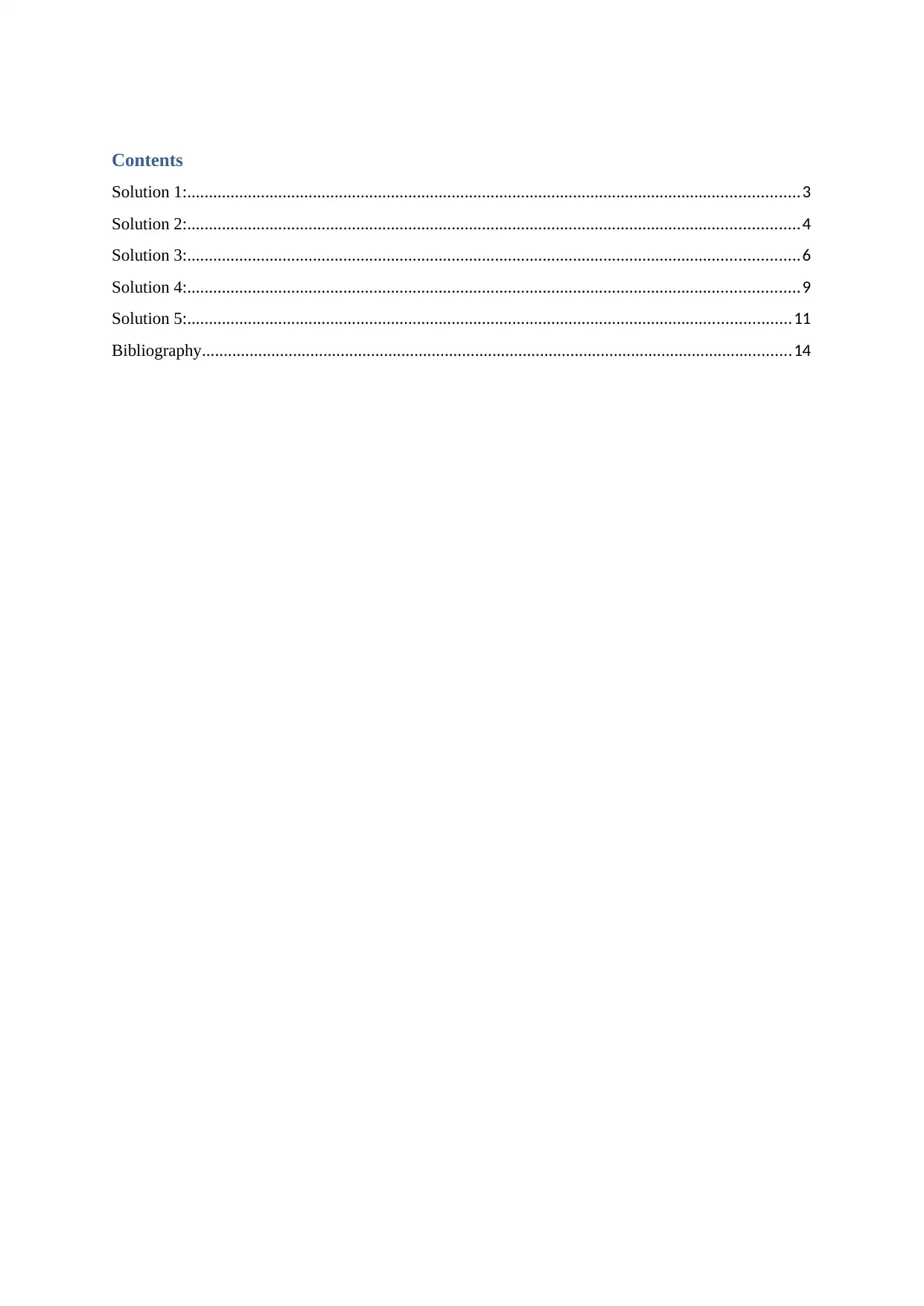
Contents
Solution 1:.............................................................................................................................................3
Solution 2:.............................................................................................................................................4
Solution 3:.............................................................................................................................................6
Solution 4:.............................................................................................................................................9
Solution 5:...........................................................................................................................................11
Bibliography........................................................................................................................................14
Solution 1:.............................................................................................................................................3
Solution 2:.............................................................................................................................................4
Solution 3:.............................................................................................................................................6
Solution 4:.............................................................................................................................................9
Solution 5:...........................................................................................................................................11
Bibliography........................................................................................................................................14
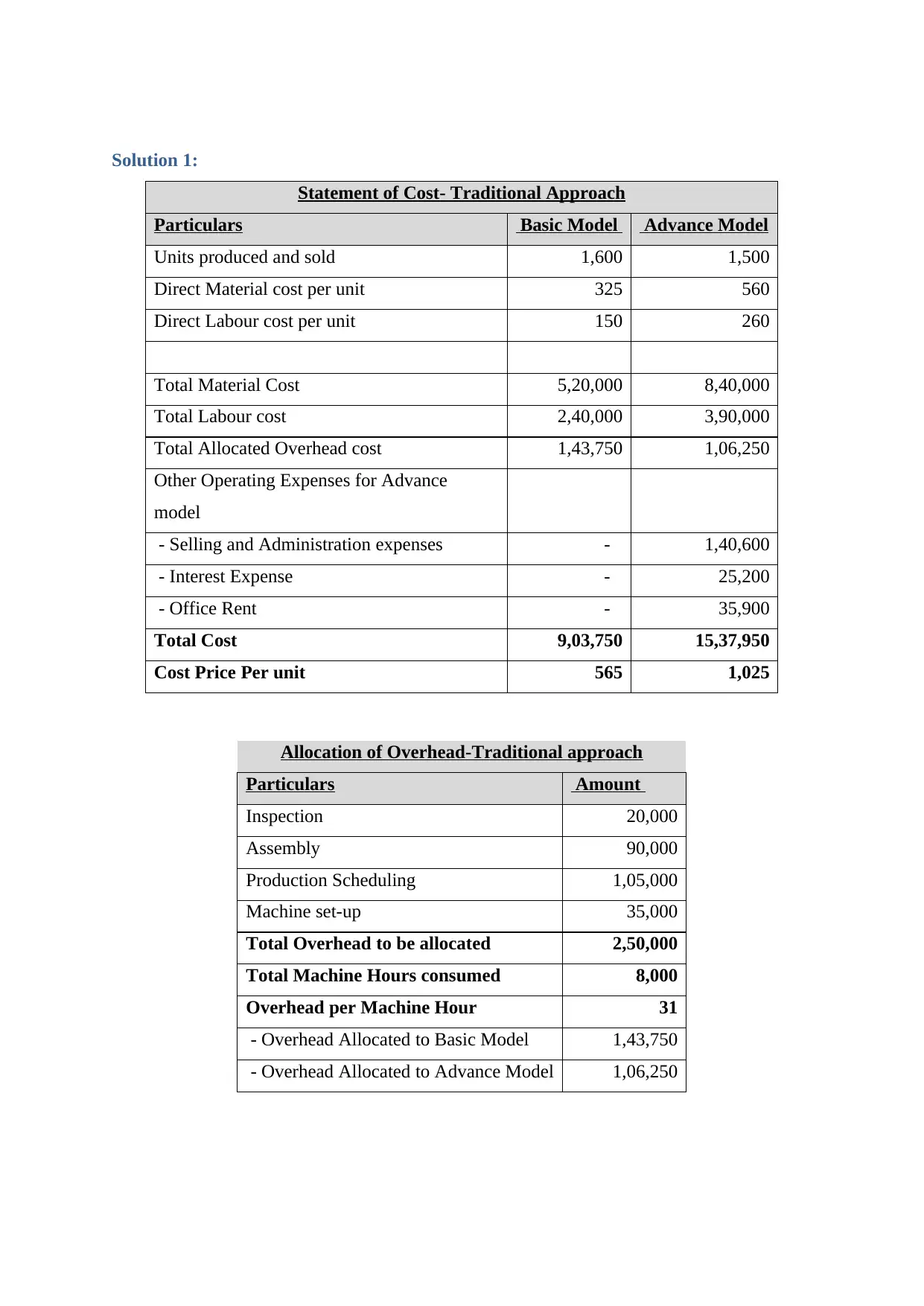
Solution 1:
Statement of Cost- Traditional Approach
Particulars Basic Model Advance Model
Units produced and sold 1,600 1,500
Direct Material cost per unit 325 560
Direct Labour cost per unit 150 260
Total Material Cost 5,20,000 8,40,000
Total Labour cost 2,40,000 3,90,000
Total Allocated Overhead cost 1,43,750 1,06,250
Other Operating Expenses for Advance
model
- Selling and Administration expenses - 1,40,600
- Interest Expense - 25,200
- Office Rent - 35,900
Total Cost 9,03,750 15,37,950
Cost Price Per unit 565 1,025
Allocation of Overhead-Traditional approach
Particulars Amount
Inspection 20,000
Assembly 90,000
Production Scheduling 1,05,000
Machine set-up 35,000
Total Overhead to be allocated 2,50,000
Total Machine Hours consumed 8,000
Overhead per Machine Hour 31
- Overhead Allocated to Basic Model 1,43,750
- Overhead Allocated to Advance Model 1,06,250
Statement of Cost- Traditional Approach
Particulars Basic Model Advance Model
Units produced and sold 1,600 1,500
Direct Material cost per unit 325 560
Direct Labour cost per unit 150 260
Total Material Cost 5,20,000 8,40,000
Total Labour cost 2,40,000 3,90,000
Total Allocated Overhead cost 1,43,750 1,06,250
Other Operating Expenses for Advance
model
- Selling and Administration expenses - 1,40,600
- Interest Expense - 25,200
- Office Rent - 35,900
Total Cost 9,03,750 15,37,950
Cost Price Per unit 565 1,025
Allocation of Overhead-Traditional approach
Particulars Amount
Inspection 20,000
Assembly 90,000
Production Scheduling 1,05,000
Machine set-up 35,000
Total Overhead to be allocated 2,50,000
Total Machine Hours consumed 8,000
Overhead per Machine Hour 31
- Overhead Allocated to Basic Model 1,43,750
- Overhead Allocated to Advance Model 1,06,250
⊘ This is a preview!⊘
Do you want full access?
Subscribe today to unlock all pages.

Trusted by 1+ million students worldwide
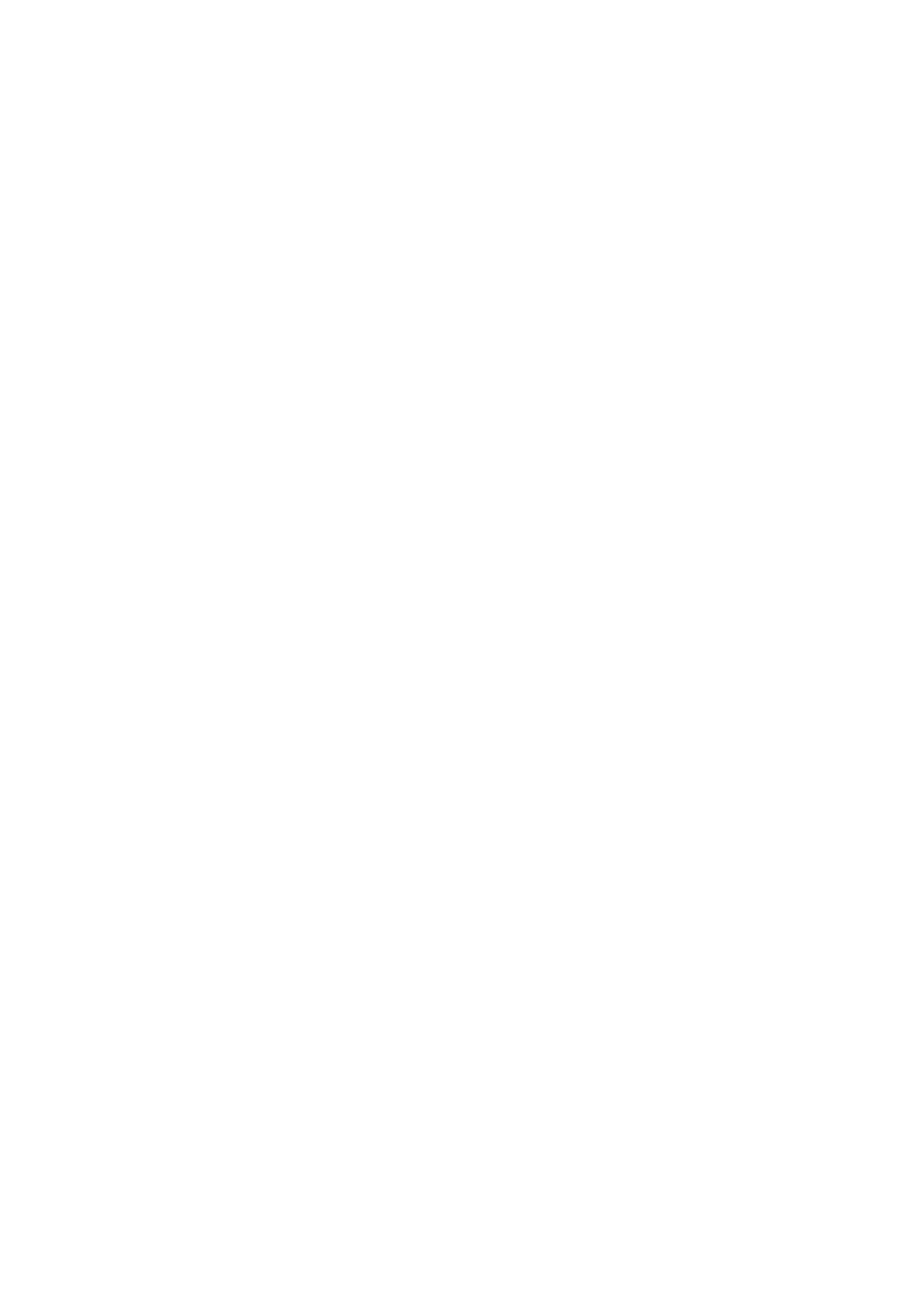
Paraphrase This Document
Need a fresh take? Get an instant paraphrase of this document with our AI Paraphraser
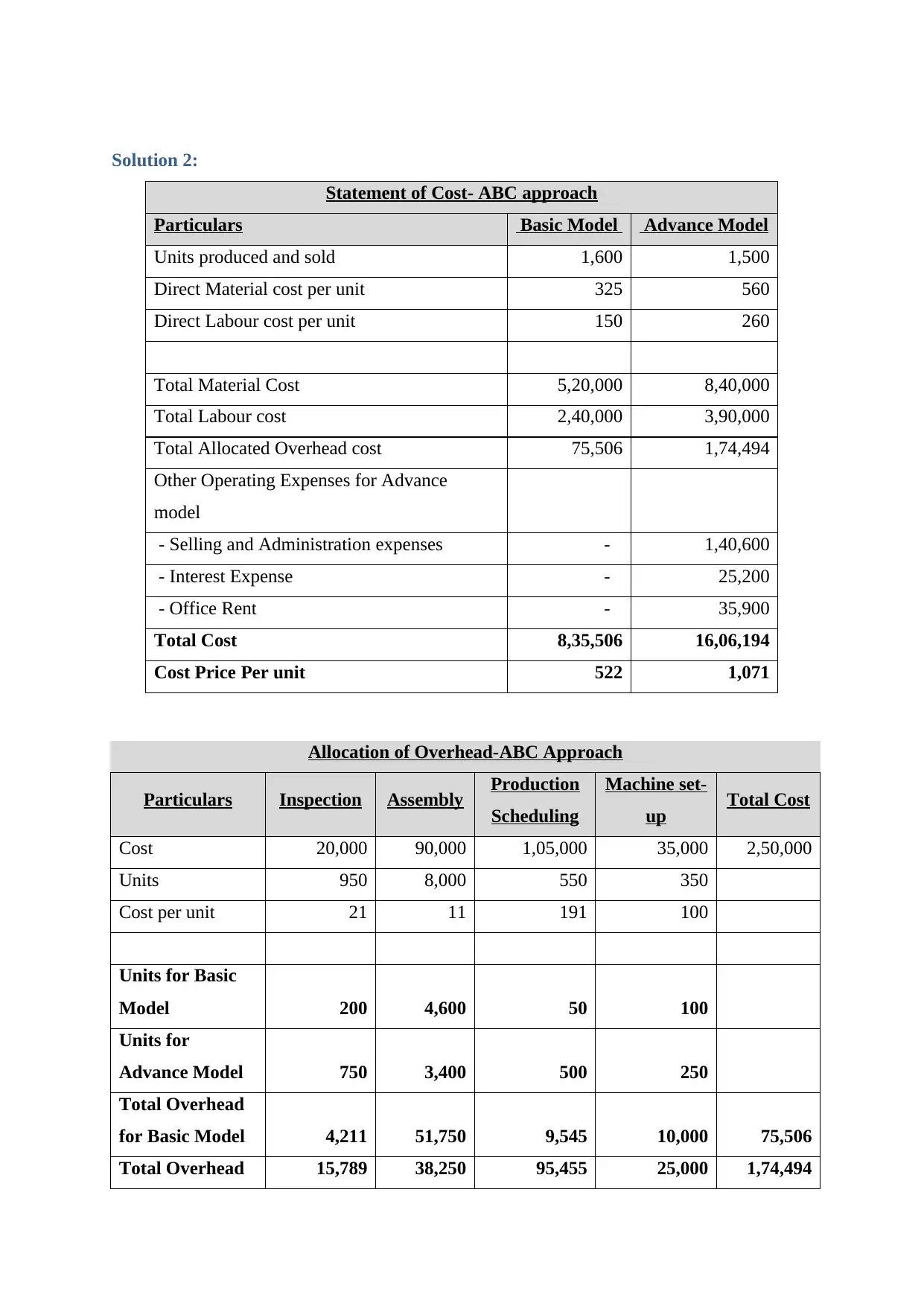
Solution 2:
Statement of Cost- ABC approach
Particulars Basic Model Advance Model
Units produced and sold 1,600 1,500
Direct Material cost per unit 325 560
Direct Labour cost per unit 150 260
Total Material Cost 5,20,000 8,40,000
Total Labour cost 2,40,000 3,90,000
Total Allocated Overhead cost 75,506 1,74,494
Other Operating Expenses for Advance
model
- Selling and Administration expenses - 1,40,600
- Interest Expense - 25,200
- Office Rent - 35,900
Total Cost 8,35,506 16,06,194
Cost Price Per unit 522 1,071
Allocation of Overhead-ABC Approach
Particulars Inspection Assembly Production
Scheduling
Machine set-
up Total Cost
Cost 20,000 90,000 1,05,000 35,000 2,50,000
Units 950 8,000 550 350
Cost per unit 21 11 191 100
Units for Basic
Model 200 4,600 50 100
Units for
Advance Model 750 3,400 500 250
Total Overhead
for Basic Model 4,211 51,750 9,545 10,000 75,506
Total Overhead 15,789 38,250 95,455 25,000 1,74,494
Statement of Cost- ABC approach
Particulars Basic Model Advance Model
Units produced and sold 1,600 1,500
Direct Material cost per unit 325 560
Direct Labour cost per unit 150 260
Total Material Cost 5,20,000 8,40,000
Total Labour cost 2,40,000 3,90,000
Total Allocated Overhead cost 75,506 1,74,494
Other Operating Expenses for Advance
model
- Selling and Administration expenses - 1,40,600
- Interest Expense - 25,200
- Office Rent - 35,900
Total Cost 8,35,506 16,06,194
Cost Price Per unit 522 1,071
Allocation of Overhead-ABC Approach
Particulars Inspection Assembly Production
Scheduling
Machine set-
up Total Cost
Cost 20,000 90,000 1,05,000 35,000 2,50,000
Units 950 8,000 550 350
Cost per unit 21 11 191 100
Units for Basic
Model 200 4,600 50 100
Units for
Advance Model 750 3,400 500 250
Total Overhead
for Basic Model 4,211 51,750 9,545 10,000 75,506
Total Overhead 15,789 38,250 95,455 25,000 1,74,494

for Advance
Model
Model
⊘ This is a preview!⊘
Do you want full access?
Subscribe today to unlock all pages.

Trusted by 1+ million students worldwide

Solution 3:
Statement of Profit and Loss- Tradition Approach
Particulars Basic Model Advance Model
Sales 10,84,500 18,45,540
Less:
Total Material Cost 5,20,000 8,40,000
Total Labour cost 2,40,000 3,90,000
Total Allocated Overhead cost 1,43,750 1,06,250
Other Operating Expenses for Advance
model
- Selling and Administration expenses - 1,40,600
- Interest Expense - 25,200
- Office Rent - 35,900
Profit 1,80,750 3,07,590
Calculation of Sales Price Per unit- Tradition Approach
Particulars Basic Model Advance Model
Cost per unit 565 1,025
Add: profit margin 20% 113 205
Sale Price Per unit 678 1,230
Statement of Profit and Loss- ABC Approach
Particulars Basic Model Advance Model
Sales 10,02,607 19,27,433
Less:
Total Material Cost 5,20,000 8,40,000
Total Labour cost 2,40,000 3,90,000
Total Allocated Overhead cost 75,506 1,74,494
Other Operating Expenses for Advance
model
- Selling and Administration expenses - 1,40,600
- Interest Expense - 25,200
- Office Rent - 35,900
Statement of Profit and Loss- Tradition Approach
Particulars Basic Model Advance Model
Sales 10,84,500 18,45,540
Less:
Total Material Cost 5,20,000 8,40,000
Total Labour cost 2,40,000 3,90,000
Total Allocated Overhead cost 1,43,750 1,06,250
Other Operating Expenses for Advance
model
- Selling and Administration expenses - 1,40,600
- Interest Expense - 25,200
- Office Rent - 35,900
Profit 1,80,750 3,07,590
Calculation of Sales Price Per unit- Tradition Approach
Particulars Basic Model Advance Model
Cost per unit 565 1,025
Add: profit margin 20% 113 205
Sale Price Per unit 678 1,230
Statement of Profit and Loss- ABC Approach
Particulars Basic Model Advance Model
Sales 10,02,607 19,27,433
Less:
Total Material Cost 5,20,000 8,40,000
Total Labour cost 2,40,000 3,90,000
Total Allocated Overhead cost 75,506 1,74,494
Other Operating Expenses for Advance
model
- Selling and Administration expenses - 1,40,600
- Interest Expense - 25,200
- Office Rent - 35,900
Paraphrase This Document
Need a fresh take? Get an instant paraphrase of this document with our AI Paraphraser

Profit 1,67,101 3,21,239
Calculation of Sales Price Per unit- ABC Approach
Particulars Basic Model Advance Model
Cost per unit 522 1,071
Add: profit margin 20% 104 214
Sale Price Per unit 627 1,285
In the given case we see that the company Sewing Easy Ltd has an opportunity to sell one of
its products to an overseas buyer. This buyer is only interested in buying the advance model
manufactured by the company. The management is interested in knowing the reason behind
the interest of the overseas buyer only in the advance model. In order to understand, we have
calculated the price and cost of the product under both traditional and activity based costing
method.
The following tables show the price and cost of both the products under traditional and
activity based costing:
Cost and Sales Price- Tradition Approach
Particulars Basic Model Advance Model
Cost per unit 565 1,025
Sale Price Per unit 678 1,230
Cost and Sales Price- ABC Approach
Particulars Basic Model Advance Model
Cost per unit 522 1,071
Sale Price Per unit 627 1,285
From the above table we see that the currently the cost price of the advance model which is
charged is $1025 per unit. This is under traditional costing system. If the company adopts the
activity based costing then the cost allocated by the company will be $1071 per unit. The
company has the policy of charging 20 percent margin on the cost price. Since the cost price
of the advance model is lower under current costing system, the sales price charged from
Calculation of Sales Price Per unit- ABC Approach
Particulars Basic Model Advance Model
Cost per unit 522 1,071
Add: profit margin 20% 104 214
Sale Price Per unit 627 1,285
In the given case we see that the company Sewing Easy Ltd has an opportunity to sell one of
its products to an overseas buyer. This buyer is only interested in buying the advance model
manufactured by the company. The management is interested in knowing the reason behind
the interest of the overseas buyer only in the advance model. In order to understand, we have
calculated the price and cost of the product under both traditional and activity based costing
method.
The following tables show the price and cost of both the products under traditional and
activity based costing:
Cost and Sales Price- Tradition Approach
Particulars Basic Model Advance Model
Cost per unit 565 1,025
Sale Price Per unit 678 1,230
Cost and Sales Price- ABC Approach
Particulars Basic Model Advance Model
Cost per unit 522 1,071
Sale Price Per unit 627 1,285
From the above table we see that the currently the cost price of the advance model which is
charged is $1025 per unit. This is under traditional costing system. If the company adopts the
activity based costing then the cost allocated by the company will be $1071 per unit. The
company has the policy of charging 20 percent margin on the cost price. Since the cost price
of the advance model is lower under current costing system, the sales price charged from

customer is also lower. The company has offered to sell the advance model to the overseas
buyer at $1230. If the company had been using proper costing methods, the sales price
charged would have been $1285.
Due to use of only one cost driver under traditional system of costing, the overheads are
distributed in an absurd manner. Activity based costing allocates the cost among the products
on the actual consumption of activity (Atkinson, 2012). This is more appropriate and helps to
determine the correct cost of the product. Since the company has charged lower sales price
from the customer, than the other companies in the market, the overseas buyer is interested in
buying only the advance model. Due to shift of burden of expense of advance model to basic
model, the price charged by the company for basic model is higher relative to other
companies. This is why the overseas buyer is only interested in buying the advance model
form the company and not the basic model.
buyer at $1230. If the company had been using proper costing methods, the sales price
charged would have been $1285.
Due to use of only one cost driver under traditional system of costing, the overheads are
distributed in an absurd manner. Activity based costing allocates the cost among the products
on the actual consumption of activity (Atkinson, 2012). This is more appropriate and helps to
determine the correct cost of the product. Since the company has charged lower sales price
from the customer, than the other companies in the market, the overseas buyer is interested in
buying only the advance model. Due to shift of burden of expense of advance model to basic
model, the price charged by the company for basic model is higher relative to other
companies. This is why the overseas buyer is only interested in buying the advance model
form the company and not the basic model.
⊘ This is a preview!⊘
Do you want full access?
Subscribe today to unlock all pages.

Trusted by 1+ million students worldwide
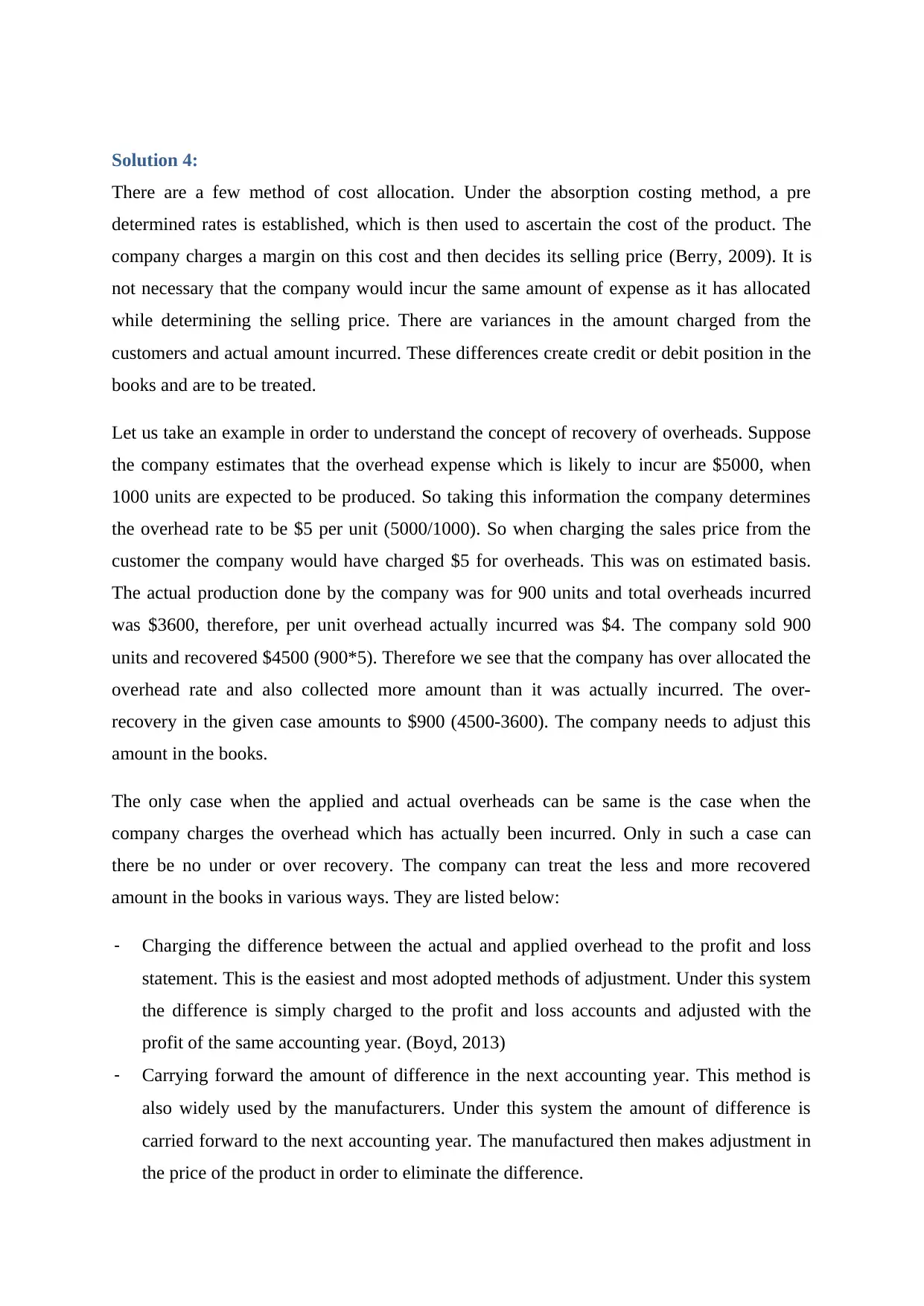
Solution 4:
There are a few method of cost allocation. Under the absorption costing method, a pre
determined rates is established, which is then used to ascertain the cost of the product. The
company charges a margin on this cost and then decides its selling price (Berry, 2009). It is
not necessary that the company would incur the same amount of expense as it has allocated
while determining the selling price. There are variances in the amount charged from the
customers and actual amount incurred. These differences create credit or debit position in the
books and are to be treated.
Let us take an example in order to understand the concept of recovery of overheads. Suppose
the company estimates that the overhead expense which is likely to incur are $5000, when
1000 units are expected to be produced. So taking this information the company determines
the overhead rate to be $5 per unit (5000/1000). So when charging the sales price from the
customer the company would have charged $5 for overheads. This was on estimated basis.
The actual production done by the company was for 900 units and total overheads incurred
was $3600, therefore, per unit overhead actually incurred was $4. The company sold 900
units and recovered $4500 (900*5). Therefore we see that the company has over allocated the
overhead rate and also collected more amount than it was actually incurred. The over-
recovery in the given case amounts to $900 (4500-3600). The company needs to adjust this
amount in the books.
The only case when the applied and actual overheads can be same is the case when the
company charges the overhead which has actually been incurred. Only in such a case can
there be no under or over recovery. The company can treat the less and more recovered
amount in the books in various ways. They are listed below:
- Charging the difference between the actual and applied overhead to the profit and loss
statement. This is the easiest and most adopted methods of adjustment. Under this system
the difference is simply charged to the profit and loss accounts and adjusted with the
profit of the same accounting year. (Boyd, 2013)
- Carrying forward the amount of difference in the next accounting year. This method is
also widely used by the manufacturers. Under this system the amount of difference is
carried forward to the next accounting year. The manufactured then makes adjustment in
the price of the product in order to eliminate the difference.
There are a few method of cost allocation. Under the absorption costing method, a pre
determined rates is established, which is then used to ascertain the cost of the product. The
company charges a margin on this cost and then decides its selling price (Berry, 2009). It is
not necessary that the company would incur the same amount of expense as it has allocated
while determining the selling price. There are variances in the amount charged from the
customers and actual amount incurred. These differences create credit or debit position in the
books and are to be treated.
Let us take an example in order to understand the concept of recovery of overheads. Suppose
the company estimates that the overhead expense which is likely to incur are $5000, when
1000 units are expected to be produced. So taking this information the company determines
the overhead rate to be $5 per unit (5000/1000). So when charging the sales price from the
customer the company would have charged $5 for overheads. This was on estimated basis.
The actual production done by the company was for 900 units and total overheads incurred
was $3600, therefore, per unit overhead actually incurred was $4. The company sold 900
units and recovered $4500 (900*5). Therefore we see that the company has over allocated the
overhead rate and also collected more amount than it was actually incurred. The over-
recovery in the given case amounts to $900 (4500-3600). The company needs to adjust this
amount in the books.
The only case when the applied and actual overheads can be same is the case when the
company charges the overhead which has actually been incurred. Only in such a case can
there be no under or over recovery. The company can treat the less and more recovered
amount in the books in various ways. They are listed below:
- Charging the difference between the actual and applied overhead to the profit and loss
statement. This is the easiest and most adopted methods of adjustment. Under this system
the difference is simply charged to the profit and loss accounts and adjusted with the
profit of the same accounting year. (Boyd, 2013)
- Carrying forward the amount of difference in the next accounting year. This method is
also widely used by the manufacturers. Under this system the amount of difference is
carried forward to the next accounting year. The manufactured then makes adjustment in
the price of the product in order to eliminate the difference.
Paraphrase This Document
Need a fresh take? Get an instant paraphrase of this document with our AI Paraphraser
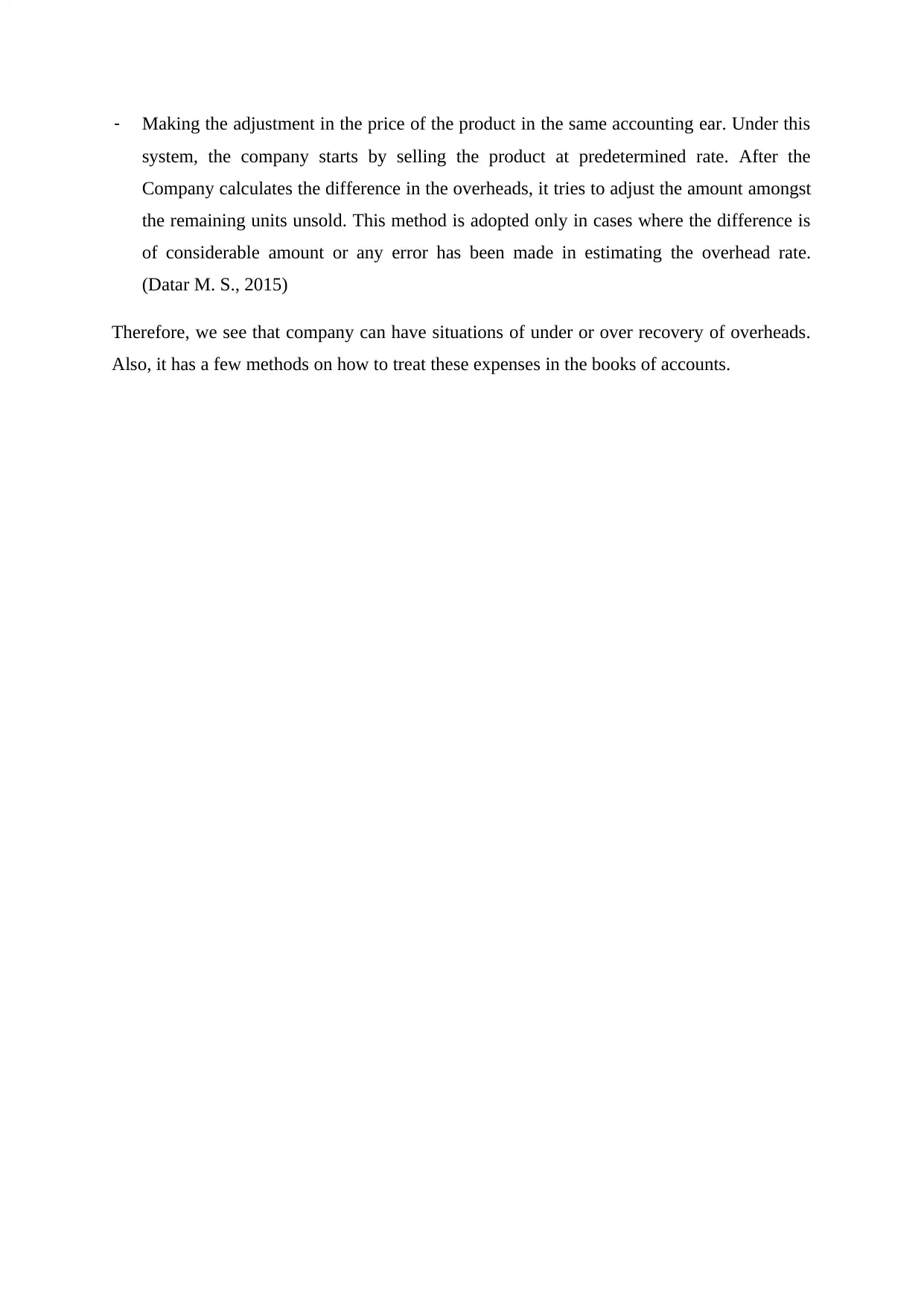
- Making the adjustment in the price of the product in the same accounting ear. Under this
system, the company starts by selling the product at predetermined rate. After the
Company calculates the difference in the overheads, it tries to adjust the amount amongst
the remaining units unsold. This method is adopted only in cases where the difference is
of considerable amount or any error has been made in estimating the overhead rate.
(Datar M. S., 2015)
Therefore, we see that company can have situations of under or over recovery of overheads.
Also, it has a few methods on how to treat these expenses in the books of accounts.
system, the company starts by selling the product at predetermined rate. After the
Company calculates the difference in the overheads, it tries to adjust the amount amongst
the remaining units unsold. This method is adopted only in cases where the difference is
of considerable amount or any error has been made in estimating the overhead rate.
(Datar M. S., 2015)
Therefore, we see that company can have situations of under or over recovery of overheads.
Also, it has a few methods on how to treat these expenses in the books of accounts.

Solution 5:
The process of using the Activity Based Costing system is a type of technique which used to
allocate the costs and expenses of different products on the basis of the resources that are
being utilized by them in the process of manufacturing (Datar S. , 2016). The activity based
costing system in a newly implemented technique which is helpful for a firm to allocate its
cost and expenses incurred during the production process and thus make appropriate
decisions. This type of costing methods is proved to be very reliable in order to construct a
relationship between the costs and the product. There are also problem faced during the
allocation of few types of the costs which are present in the manufacturing process because of
the diverse nature of the function like the administrative expenses. It have been constantly
noticed that the cost of the manufacturing industries are much easier to allocate thus making
this type of costing process much suitable for the production industries.
The main advantages that can be achieved by the use of the activity based costing method
are:
1. Accurate production cost analysis: It has been made clear that the main function of the
activity based costing method is to allocate the different costs in a group by
differentiating in the services, actual and real cost of the product and thus estimate the
price of the product. There are few industries in which the expenses of the firm are
raised because of the small and various overhead expenses that constitute a huge past
of the cosy of the manufactured product. Therefore it is very necessary for the firm to
allocate the costs in a specified and elaborated manner so that there may be no
problems faced in the future which will generate problems during the analysis of the
cost of the products. (Horngren, 2012)
2. Assistance in controlling costs: the system of the performance of the activity based
costing method clearly depends on the functional relationship present between the
activities and the product, which makes it very accessible for the managers to
determine the overhead expenses which are being incurred to a relation to the
activity. There are many of the available measures that can be used by the firm in
order to have a proper control over these types of costs.
3. Helpful in discovering the activities: The method of the activity based costing consists
of the assessment of the data of the application of each activity so that there can be a
The process of using the Activity Based Costing system is a type of technique which used to
allocate the costs and expenses of different products on the basis of the resources that are
being utilized by them in the process of manufacturing (Datar S. , 2016). The activity based
costing system in a newly implemented technique which is helpful for a firm to allocate its
cost and expenses incurred during the production process and thus make appropriate
decisions. This type of costing methods is proved to be very reliable in order to construct a
relationship between the costs and the product. There are also problem faced during the
allocation of few types of the costs which are present in the manufacturing process because of
the diverse nature of the function like the administrative expenses. It have been constantly
noticed that the cost of the manufacturing industries are much easier to allocate thus making
this type of costing process much suitable for the production industries.
The main advantages that can be achieved by the use of the activity based costing method
are:
1. Accurate production cost analysis: It has been made clear that the main function of the
activity based costing method is to allocate the different costs in a group by
differentiating in the services, actual and real cost of the product and thus estimate the
price of the product. There are few industries in which the expenses of the firm are
raised because of the small and various overhead expenses that constitute a huge past
of the cosy of the manufactured product. Therefore it is very necessary for the firm to
allocate the costs in a specified and elaborated manner so that there may be no
problems faced in the future which will generate problems during the analysis of the
cost of the products. (Horngren, 2012)
2. Assistance in controlling costs: the system of the performance of the activity based
costing method clearly depends on the functional relationship present between the
activities and the product, which makes it very accessible for the managers to
determine the overhead expenses which are being incurred to a relation to the
activity. There are many of the available measures that can be used by the firm in
order to have a proper control over these types of costs.
3. Helpful in discovering the activities: The method of the activity based costing consists
of the assessment of the data of the application of each activity so that there can be a
⊘ This is a preview!⊘
Do you want full access?
Subscribe today to unlock all pages.

Trusted by 1+ million students worldwide
1 out of 13
Related Documents
Your All-in-One AI-Powered Toolkit for Academic Success.
+13062052269
info@desklib.com
Available 24*7 on WhatsApp / Email
![[object Object]](/_next/static/media/star-bottom.7253800d.svg)
Unlock your academic potential
Copyright © 2020–2025 A2Z Services. All Rights Reserved. Developed and managed by ZUCOL.





